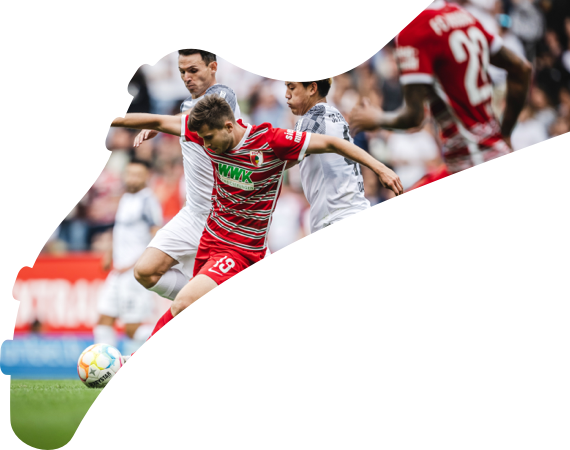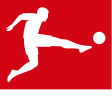
Animal team names from 60 years of the Bundesliga
Bayern Munich are the Reds, Borussia Dortmund the Black-Yellows, Werder Bremen the Green-Whites, Hamburg the Red Shorts, Schalke the Royal Blues. Yes, colours are a big theme in football nicknames. There’s even a floral variety with Darmstadt known as the Lilies and Greuther Fürth the Cloverleaves. But how do teams come to be referred to as animals?
Find out more about 60 years of the Bundesliga, with records, legends and funny stories!
When it comes to Cologne, you don’t need to look far. The club bears a goat proudly on its club crest. But like the chicken and the egg, what came first, Hennes the living club mascot or the badge? It was in fact the living goat, gifted to the club as a lucky charm and Carnival joke by circus director Carola Williams in February 1950. He was named after player-coach Hennes Weisweiler – a false rumour goes that the young goat urinated on Weisweiler at the handover – and the club simply rolled with the joke. Hennes would appear at home games, even travel on the team bus, and was soon incorporated into the club’s badge and culture. We’re now on the ninth version of Hennes representing the team affectionately known as the Billy Goats (Geißböcke in German). The club’s training ground is even known as the Geißbockheim (Billy Goat’s Home).
Another horned animal but this time only seen at games in costume form is RB Leipzig’s Bulli. Yes, a red bull for Die Roten Bullen. No prizes for guessing how that name came about.
A far less obvious animal nickname is that of the Foals at Borussia Mönchengladbach. Gladbach were one of the Bundesliga’s dominant sides in the 1970s, winning the title three times under Weisweiler – yes, the same Cologne legend and origin of Hennes the goat. When Borussia first came up to the top flight in 1965, they did so with a young squad whose average age was only 20. Their quick, free-flowing play soon earned them the nickname the Foals (Fohlen in German) in local media, describing how the team galloped around the pitch like young horses. A mascot foal called Jünter has existed since 1998 and is named after former player Günter Netzer. Unlike their arch-rivals Cologne, though, this mascot is only a costume, not a real horse.
Another club bearing an animal on their club crest is 1860 Munich and their lion – hence the nickname Die Löwen – that was first chosen in March 1880 as a common symbol of Bavarian heraldry. The badge design has had to be adapted a number of times down the years, including to avoid confusion with Munich’s Löwenbräu brewery, but the nickname of the 1965/66 Bundesliga champions has never changed.
The same can’t quite be said for Eintracht Braunschweig. Also known as Die Löwen and with a lion on their badge, they were surprise champions in 1966/67. However, their club crest during the 1970s and 80s was changed to feature a stag as they looked to promote their sponsor Jägermeister. Members even voted to rename the club FTSV Jägermeister Braunschweig, but that was rejected by the German FA. The red lion of the city of Braunschweig returned in 1986.
There are no land predators at Eintracht Frankfurt but instead the eagle of the city’s coat of arms, which first featured on the badge of predecessor club Frankfurter FV back in the early 1900s. As such, Eintracht are known as Die Adler (the Eagles). And like Portuguese club Benfica, there is in fact a real eagle in the stadium on matchdays. Alongside Hennes the goat, Attila the eagle is the only living mascot in the Bundesliga and was also at Frankfurt’s DFB Cup finals in 2017, 2018 and 2023. Even before Attila, coach Klaus Toppmöller once had an eagle brought into the changing room to motivate his players in 1993/94.
A less predatory bird can be found up north where Holstein Kiel are referred to as Die Störche (the Storks). Kiel are yet to play in the Bundesliga but were national champions in 1911/12 when the avian nickname already existed. Its exact origin isn’t clear. Some say it comes from an old pub near the stadium called Zum Storchnest that fans used to frequent. Other say it was because the club’s white shorts and red socks reminded them of a white stork.
But one club where kit designs definitely prompted an animal nickname is Duisburg. Their blue-and-white striped shirts led to the name Die Zebras, and zebras have often appeared on the club badge. The song ‘Zebratwist’ was written in 1963 and was the first official club anthem in the Bundesliga.
When it comes to picking an animal for a club, there have been few simpler cases than Wolfsburg and the Wolves. There’s no wolf that prowls around the Volkswagen Arena, but Die Wölfe did once have a coach called – and you couldn’t make this up – Wolfgang Wolf. He spent five years in charge from 1998 to 2003.
Storks, eagles, zebras, lions, wolves, bulls, foals and goats – the Bundesliga is clearly the place to be for animal lovers as well as football afficionados.


